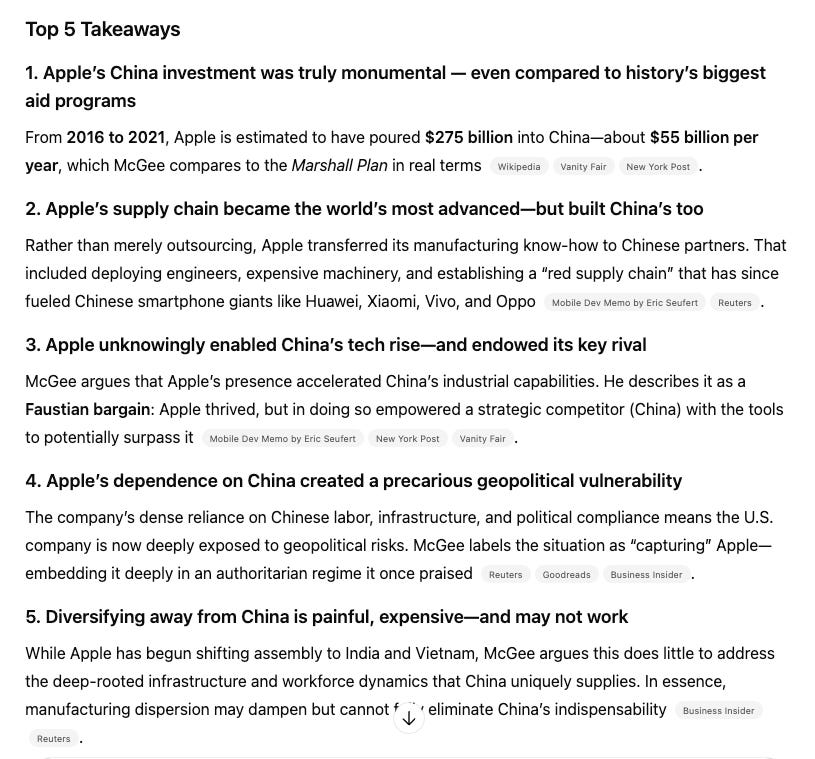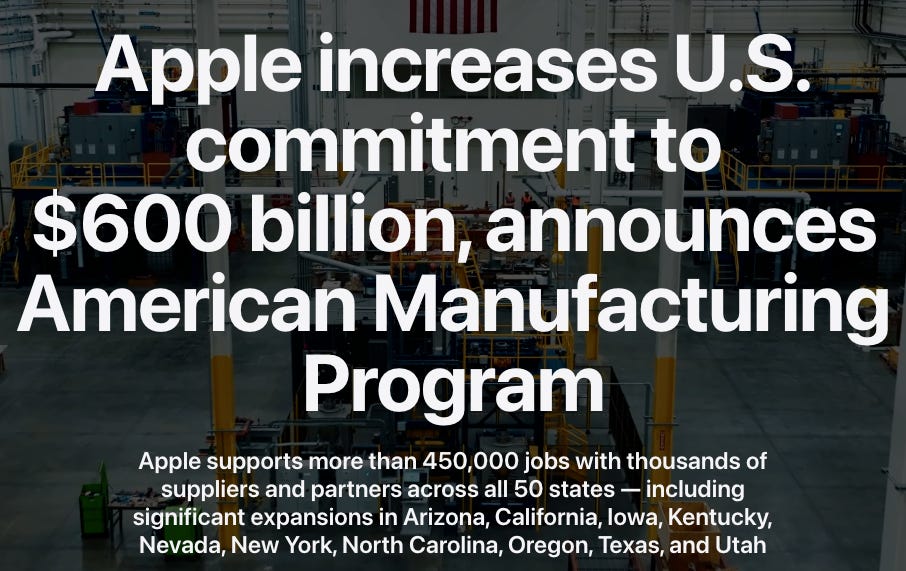Apple. A Master Class On How To Win Friends & Influence People
Intel, are you paying attention?
Apple has had a rocky start to the year as far as its relationship with the US Administration is concerned. Back in May, while on his Middle East trip surrounded by an entourage of US technology leaders, President Trump made a point of publicly highlighting the fact that Apple CEO Tim Cook was not present. Then there was the awkward moment when the Administration realised that instead of bringing iPhone production back to the US, Mr. Cook had in fact switched it (at least for final assembly) in part to India from China.
Then came Patrick McGee’s book about Apple’s investment in China over the years..
It’s a riveting read and here’s the top 5 key takeaways from the book courtesy of ChatGPT:
At a time when the US Administration is striving to have everything made in America once again, this book did nothing to help Apple’s image as an iconic american company. Then there was the fiasco that was Apple Intelligence, or rather the lack of it, at the company’s annual developer conference back in June which we wrote about here:
Apple Intelligence. What's Another Year?
In the wake of last year’s Apple WWDC we shared our thoughts on the then-newly minted “Apple Intelligence” concept:
To make matters worse, the tariff situation as it relates to iPhones has gone back and forth on multiple occasions over the course of the past six months, a veritable damocles sword hanging over the company and its share price. All of these challenges needed a solution, and that solution was a trip to the White House to visit President Trump and offer up an additional $100 billion in US investment over the next four years. This on top of the $500 billion already promised earlier this year, details here.
The key word missing from that announcement was the word “additional”. In other words, this was mostly money that Apple already spends or had planned to spend in the US each year.
The $500 billion commitment includes Apple’s work with thousands of suppliers across all 50 states, direct employment, Apple Intelligence infrastructure and data centers, corporate facilities, and Apple TV productions in 20 states. Apple remains one of the largest U.S. taxpayers, having paid more than $75 billion in U.S. taxes over the past five years, including $19 billion in 2024 alone.
You can find the details of the latest commitment from Apple here.
So what are we to make of the additional $100 billion commitment from Apple? Is it credible ? Well, let’s just say it’s complicated and let’s dig in…
Keep reading with a 7-day free trial
Subscribe to Semicon Alpha to keep reading this post and get 7 days of free access to the full post archives.





